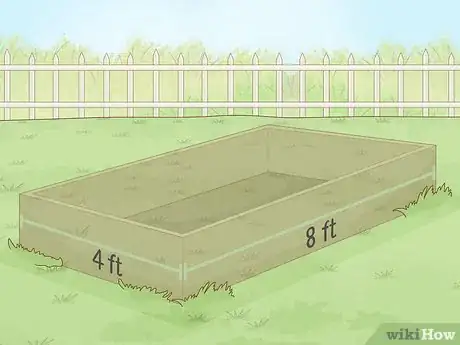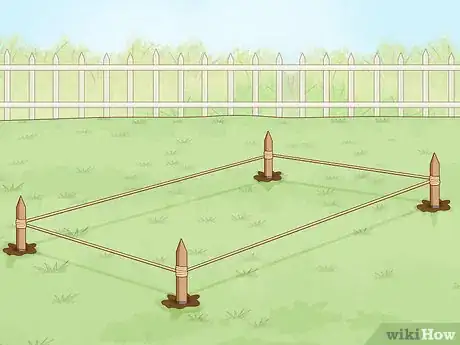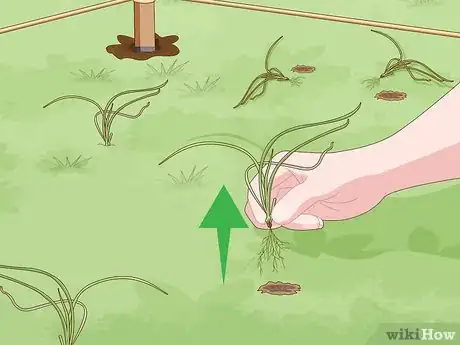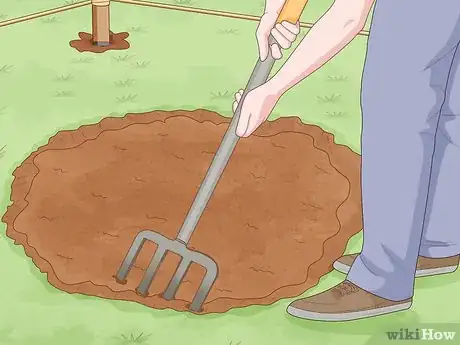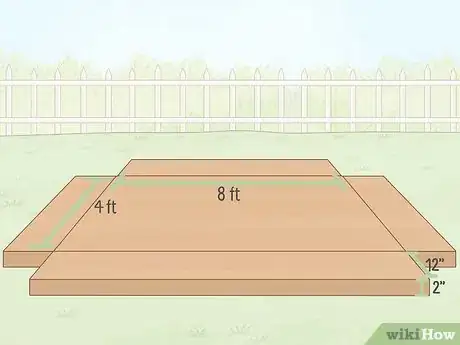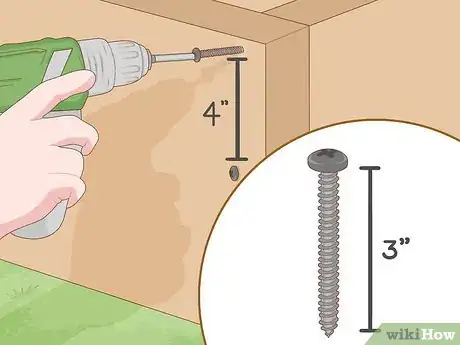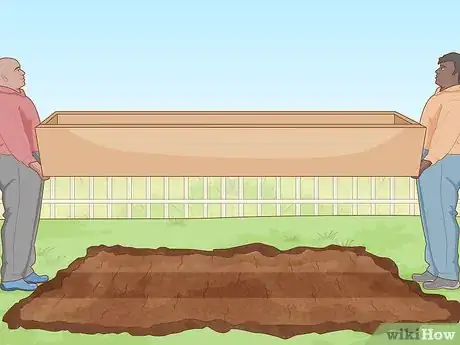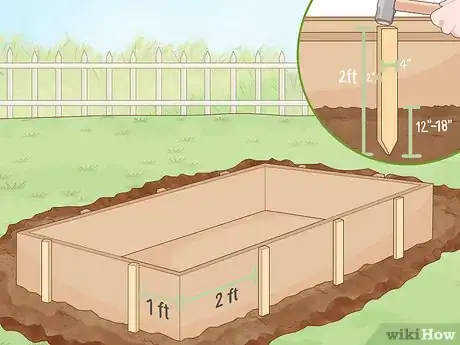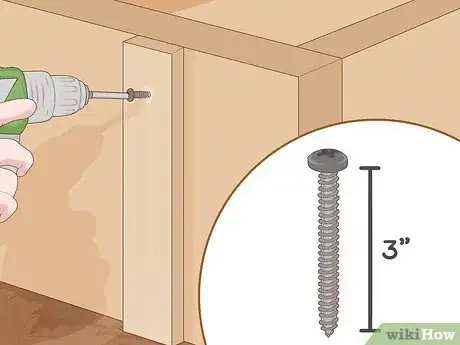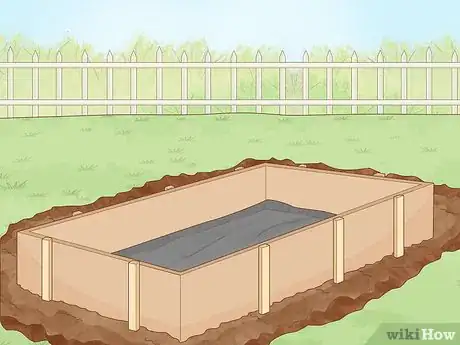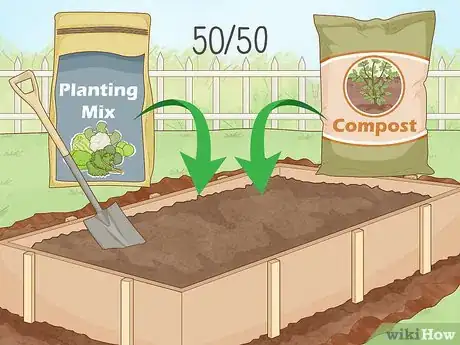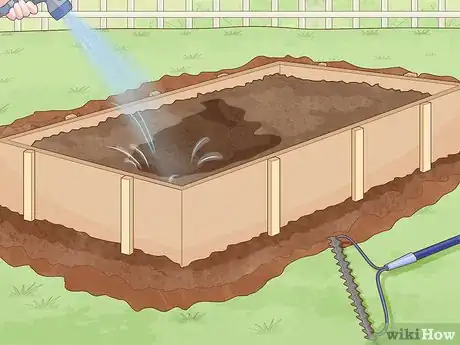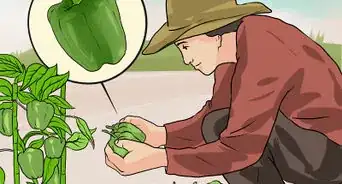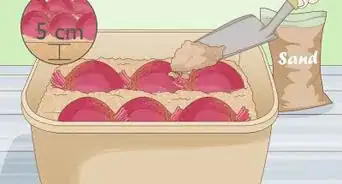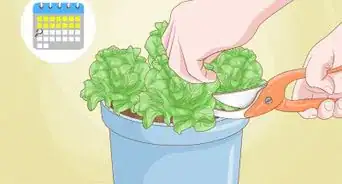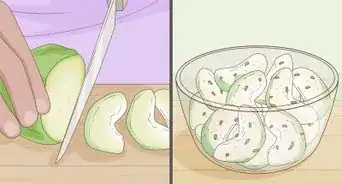This article was co-authored by Steve Masley. Steve Masley has been designing and maintaining organic vegetable gardens in the San Francisco Bay Area for over 30 years. He is an Organic Gardening Consultant and Founder of Grow-It-Organically, a website that teaches clients and students the ins and outs of organic vegetable gardening. In 2007 and 2008, Steve taught the Local Sustainable Agriculture Field Practicum at Stanford University.
This article has been viewed 41,602 times.
Vegetable garden boxes, also known as raised garden beds, are a great feature to install in your garden. They look neat and tidy, drain well, and make it easy to tend your plants. To make a garden box, you will first have to clear the area that you plan to put the box, then assemble the box, and finally add soil to plant your vegetables in.
Steps
Clearing the Site for the Garden Bed
-
1Choose a level location that gets good sun during the day. Pick a spot for the raised garden bed that is not shaded and is flat so that the garden will have proper drainage. A standard vegetable garden box is 4 ft (1.2 m) by 8 ft (2.4 m), but work with the space you have.[1]
- Don’t make your garden box any wider than 4 ft (1.2 m) or it will be hard to plant and tend to your vegetables in the middle.
- When in doubt, a North-South orientation is generally a good option for garden beds to ensure they get plenty of sun.
-
2Mark the location of the garden bed with string and pegs. Stick a peg in the ground where each corner of the box will be. Tie string from each peg to the next to mark the sides of the garden box so you know where to prepare the ground.[2]
- You can also use a chalk line or spray chalk to mark the outline of the garden bed.
Advertisement -
3Clear away weeds and grass from where the garden box will sit. Pull up any weeds from the soil so they don’t grow up into your future garden. Dig up and remove any turf if the area is currently occupied by lawn.[3]
- If you have the time, you can place a piece of cardboard or a tarp over the area of lawn for 6 weeks or so to kill the grass and make it easier to remove.
-
4Break up and loosen the soil with a pitchfork. Use a pitchfork or garden fork to turn over and mix up the top 6 in (15 cm) or so of soil underneath where the new garden bed will go. This will help kill any lurking weeds or grass and even out the soil underneath the garden.[4]
- Try to mix up the soil as much as you can and spread it out with the tips of the pitchfork or a rake so that the bottom of the bed will be as flat as possible.
Assembling the Garden Box
-
1Lay out your lumber flat on the ground in the shape of the box. Use 2 4 ft (1.2 m) long and 2 8 ft (2.4 m) long 2 in (5.1 cm) by 12 in (30 cm) pieces of lumber for the sides of a standard 4 ft (1.2 m) by 8 ft (2.4 m) garden box. Lay them out flat in the shape of the box with the corners touching.[5]
- You can do this either over the prepared site for the box, or off to the side if you have the space. Keep in mind that the frame will be quite heavy after you assemble it.
- If you are making a garden box of a different size, just adjust the lengths of the lumber for the sides accordingly. 12 in (30 cm) is the ideal height for raised garden beds so that the plants have plenty of room for their root systems.
- Use a natural wood that will endure the elements well, like cedar, if you want your garden box to last a long time. If cedar is too expensive, then you can use cheaper pressure-treated lumber that will withstand the elements for many years.
Warning: Don’t use old railroad ties or any other lumber that has been treated with creosote, which is toxic.
-
2Screw the sides together 1 corner at a time. Pick a corner to start in and turn the pieces of lumber on their sides so they are sitting against each other, with the end of 1 piece square against the inside corner of the other piece. Use a drill to put a 3 in (7.6 cm) screw every 4 in (10 cm) through the outside piece into the end of the inside piece to hold them together.[6]
- This will be much easier if you have someone helping you to hold the sides in place while you screw them together. If you don’t have a helper, you can screw a piece of scrap lumber diagonally from 1 corner to the other as a brace to hold them in place while you screw them together.
-
3Set the box frame in place over the prepared site. Have someone help you lift and set the garden box frame over the site you cleared. Adjust it so it’s perfectly sitting in the location you want it to be permanently.[7]
- If you are working alone, then it’s a good idea to assemble the frame roughly where it will sit so you can just make minor adjustments to get it in position.
-
4Pound 10 wooden or rebar stakes into the ground around the box. Use 2 ft (0.61 m) long 2 in (5.1 cm) by 4 in (10 cm) pieces of wood with the tips cut into points, or 2 ft (0.61 m) long pieces of rebar. For each side of the box, use a sledgehammer to pound a stake about 12–18 in (30–46 cm) deep into the ground, 1 ft (0.30 m) in from each corner. Then, pound in the additional stakes at 2 ft (0.61 m) intervals. [8]
- Each shorter side will have 2 support stakes and each longer side will have 3, each separated by 2 ft (0.61 m) of space.
- Try to get the stakes deep enough into the ground so that the tops don’t stick up above the sides of your raised garden bed. If you are left with any sticking above, then you can cut the tops off using a hacksaw to make them flush with the top of the garden bed.
- Make sure to place the stakes right up against the outside of the garden box. These support stakes will help hold the box together against the pressure of the expanding soil once you have plants in your garden spreading roots everywhere.
-
5Screw the stakes to the frame if you used wooden ones. Use a drill to insert a 3 in (7.6 cm) screw through the middle of the wooden stake into the garden box frame. This will help hold the wooden frame in place as your plants grow over the years.[9]
- If you used rebar, just make sure it is as flush against the box frame as possible. You don’t need to attach it in any way.
Adding Soil to the Garden Bed
-
1Cover the bottom of the bed with a layer of landscape fabric. Use weed-suppressing landscape fabric to cover the whole bottom of the garden box from side to side. Make sure the fabric extends right to each side of the the wooden frame.[10]
- For example, for a standard 4 ft (1.2 m) by 8 ft (2.4 m) garden bed, you need to get a piece of landscape fabric that is at least that big.
- Landscape fabric usually comes in rolls that are at least 3 ft (0.91 m) wide, and you should be able to get the amount you need cut to size at a garden center so that you don't need to buy a whole roll.
- This will keep weeds from sprouting up from the ground soil and into your garden.
-
2Fill the bed with a 50/50 mix of planting soil and compost. Use about 3-4 2 sq ft (0.19 m2) bags each of compost and planting soil. Pour it all into the garden bed and mix it together with a garden fork or spade.[11]
- You can get planting soil and compost in bags or in bulk at a garden center. Buying in bulk is usually cheaper.
-
3Rake the soil smooth and spray it with a hose to settle it. Use a rake to even out the top of the soil so it is more or less flat and either flush or just below the top edge of the garden box frame. Lightly spray the whole top layer of soil with water from your garden hose to tamp down the soil.[12]
- Your garden box is now ready for you to plant your vegetables!
Community Q&A
-
QuestionBOX 4X6X 8" DEEP HOW MUCH TOPSOIL TO FILL IT (BAGS)
 Gavin DonnellyCommunity AnswerUse about 3-4 2 sq ft (0.19 m2) bags each of compost and planting soil mixed together for the best results.
Gavin DonnellyCommunity AnswerUse about 3-4 2 sq ft (0.19 m2) bags each of compost and planting soil mixed together for the best results.
Things You’ll Need
- String
- Pegs
- Pitchfork
- Spade
- 2 4 ft (1.2 m) 2x12s
- 2 8 ft (2.4 m) 2x12s
- 10 2 ft (0.61 m) 2x4s or pieces of rebar
- 3 in (7.6 cm) screws
- Drill
- 3-4 2 sq ft (0.19 m2) bags of planting soil
- 3-4 2 sq ft (0.19 m2) bags of compost
- Landscaping fabric
References
- ↑ https://www.almanac.com/content/how-build-raised-garden-bed
- ↑ https://www.popularmechanics.com/home/lawn-garden/how-to/g92/build-raised-garden-beds/
- ↑ https://www.almanac.com/content/how-build-raised-garden-bed
- ↑ https://www.almanac.com/content/how-build-raised-garden-bed
- ↑ https://www.thisoldhouse.com/how-to/how-to-build-raised-vegetable-garden
- ↑ https://www.thisoldhouse.com/how-to/how-to-build-raised-vegetable-garden
- ↑ https://www.thisoldhouse.com/how-to/how-to-build-raised-vegetable-garden
- ↑ https://www.goodhousekeeping.com/home/gardening/g20706096/how-to-build-a-simple-raised-bed/
- ↑ https://www.thisoldhouse.com/how-to/how-to-build-raised-vegetable-garden
